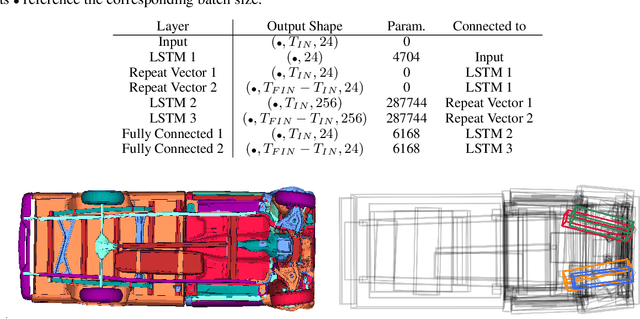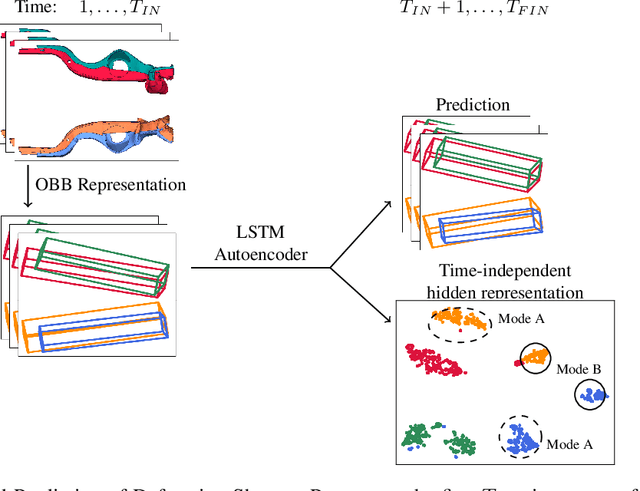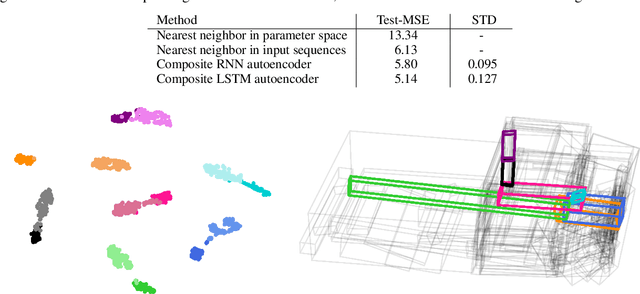Analysis and Prediction of Deforming 3D Shapes using Oriented Bounding Boxes and LSTM Autoencoders
Paper and Code
Aug 31, 2020



For sequences of complex 3D shapes in time we present a general approach to detect patterns for their analysis and to predict the deformation by making use of structural components of the complex shape. We incorporate long short-term memory (LSTM) layers into an autoencoder to create low dimensional representations that allow the detection of patterns in the data and additionally detect the temporal dynamics in the deformation behavior. This is achieved with two decoders, one for reconstruction and one for prediction of future time steps of the sequence. In a preprocessing step the components of the studied object are converted to oriented bounding boxes which capture the impact of plastic deformation and allow reducing the dimensionality of the data describing the structure. The architecture is tested on the results of 196 car crash simulations of a model with 133 different components, where material properties are varied. In the latent representation we can detect patterns in the plastic deformation for the different components. The predicted bounding boxes give an estimate of the final simulation result and their quality is improved in comparison to different baselines.
 Add to Chrome
Add to Chrome Add to Firefox
Add to Firefox Add to Edge
Add to Edge